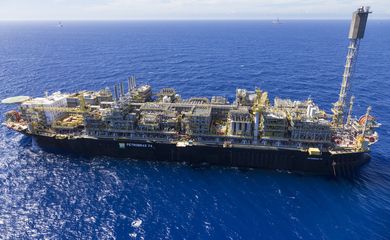Petrobras achieves record in gas reinjection into underground tanks

Petrobras reached a record in the reinjection of carbon dioxide or carbonic gas (CO2) in its oil operations. A total of 10.6 million tons of the polluting gas were reused in 2022, which the state-owned company claims to be the largest CO2 reinjection program in the world.

According to Petrobras, the volume represents 25 percent of the total carbon dioxide reinjections made in all oil operations in the world.
The emission of pollutant gases is something inherent to the production of oil and natural gas. In recent years, however, the oil industry has made efforts to reduce its impact on the environment, seeking to reuse carbon dioxide and prevent part of it from being dispersed into the atmosphere, since this dispersion contributes to climate change.
One way to reduce pollutant emissions is to put this gas back into underground reservoirs. Besides the positive impact on the environment, this action generates positive results for the company.
To bring the oil to the surface, it must be pressed into the reservoir. This pressure is made by reinjecting another product which may be water or carbon dioxide.
"The solution developed by Petrobras is pioneering because, at the same time that it avoids emissions, it promotes an increase in the amount of oil that can be extracted from the reservoir, the so-called Enhanced Oil Recovery (EOR). Natural gas and CO2 are separated on the platform and the reinjection of CO2 into the reservoir is done alternately with water (alternating water and gas injection technology - Water Alternating Gas - WAG), helping to maintain internal pressure and improving oil recovery," according to Petrobras website.
Currently, the 21 platforms that produce oil in the pre-salt layer of the Santos Basin and are operated by Petrobras use CCUS technology (Carbon Capture, Utilization and Storage) associated with advanced oil recovery.
The project was implemented in 2008. Since then, about 40 million tons of carbon dioxide have been reinjected into the subsoil. Petrobras' goal is to reinject the same 40 million tons, but annually, starting in 2025.


